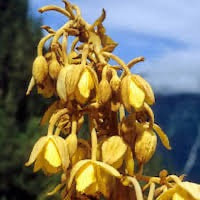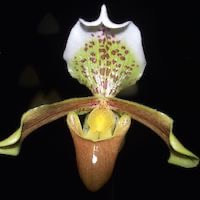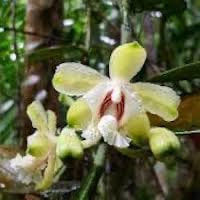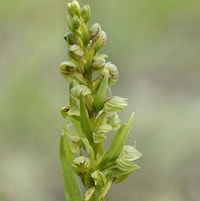MFL9- Men's Floral 9 - For the love of Cedar
|
Native Singaporean Orchid notes: Rhyncholaeliocattleya King of Taiwan
Rhyncholaeliocattleya King of Taiwan, also known as Rlc. King of Taiwan, is a prized orchid hybrid featured in Floral 9 (Men) for team-building perfume workshops. Combining traits from Cattleya, Laelia, and Brassavola species, it boasts large, vibrant flowers in shades of purple, pink, and white. This orchid captivates with its regal appearance, broad petals, and contrasting lip colors. Cultivated widely in Taiwan, it symbolizes national pride and requires specific care to thrive, rewarding enthusiasts with its majestic blooms.
|
Therapeutic Orchid notes:
|
Galeola lindleyana (Hook f. and Thomson) Rchb. f.
Galeola lindleyana, known as Maoeshanhu Lan (Hair stem coral orchid) in Chinese and Shan Hu (mountain coral) in Taiwanese, thrives in moist, rocky areas across Taiwan, China, and Southeast Asia. It's valued for its medicinal properties, including heat reduction, diuretic effects, and treating kidney inflammation and urinary issues. Its name reflects its delicate appearance with hair-like stems resembling coral branches, flourishing in mountainous terrains. Cultivating this orchid requires mimicking its natural habitat for optimal growth and appreciation of its ecological and medicinal significance. |
|
Paphiopedilum insigne (Wall. et Lindl.) Pfitzer
Paphiopedilum insigne, also known as Naoquehua (noisy sparrow orchid) or Bobandou Lan in Chinese, is a versatile terrestrial orchid found in regions like north-west Yunnan, Guangdong, Guangxi, Nepal, and north-east India. It thrives on grassy slopes and is favored in hybridization for its variability. Traditionally, it's used as a natural pesticide against pests like sparrows and cockroaches, boiled or soaked to create a pest control solution due to its effectiveness and cultural significance. |
|
Vanilla griffithii Rchb. f.
Vanilla griffithii, also called Telinga kerbaoo in India, is a unique orchid thriving in regions like India, southern Thailand, Sumatra, Peninsular Malaysia, and Borneo. It grows well in low-elevation areas, often on the ground and climbing trees in shaded spots. In India, its large, sweet fruit is enjoyed as a vegetable in local cuisine. Its flowers are used to make a fever-relieving extract, and its leaves and stems are utilized for promoting hair growth and care, showcasing its diverse cultural and practical significance. |
|
Dactylorhiza viridis (Linn.) R.M. Bateman, Pridgeon and M.W. Chase syn. Coeloglossum viride Hartm.
Dactylorhiza viridis, also known as Coeloglossum viride or the frog orchid, is a resilient orchid species with multiple names and uses across regions. In China, it's called Woshe Lan, Luhua-woshe Lan, Nanhulinyuzi Lan, Aoshe Lan, Shoushen, and Aoshezhanglie Lan, each name reflecting its features or cultural significance. Tibetan medicine refers to it as Wangla, highlighting its medicinal value. This orchid thrives in Alaska's freezing temperatures, showcasing its adaptability. |
Other scent note
Scentopia Library Reference ingredient
Lavender - Check details at Scentopia's scent library
Download the guided mediation that works best with this Orchid fragrance oil
| men_floral_essential_oil_orchi_00009.mp3 | |
| File Size: | 43682 kb |
| File Type: | mp3 |




